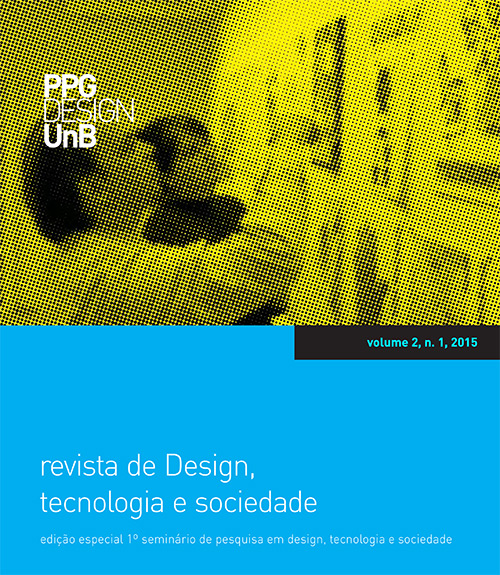Design for vunerable community: the oppressed point of view
Resumen
This paper described the path of Vila Rosario project that had its roots in empathic design, but finally built on Paulo Freire’s Pedagogy of the Oppressed. The study was conducted in 2005-2008 in Vila Rosario about 20 km north of downtown Rio de Janeiro. It focused on the prevention and treatment of tuberculosis. The paper describes our design approach, process, drivers, many design outcomes, and our tests. It ends with a discussion of the implications of our approach to design.
Descargas
Citas
Costa-Neto, C. 2002. Vila Rosário. Cálamo Produção Editorial. Rio de Janeiro.
Costa-Neto, C. 2003. Tuberculose, Vila Rosário e a cadeia da miséria: angústias e reflexões de um cidadão. Boletim de Pneumologia Sanitária 2003; Vol. 11 No 2, pp. 25-40.
Costa-Neto, C. 2004. Tuberculose, Vila Rosário e a cadeia da miséria. Antigas angústias, mais reflexões e novos caminhos. Boletim de Pneumologia Sanitária 2004; Vol. 12 No 3, pp. 171-183.
Couto, R. and Ribeiro, F. 2002. Retrieved 2 5, 2007 from http://www. puc-rio.br/sobrepuc/depto/dad/lpd/download/designemparceria.rtf
Cunha, M. B. 2005. Nos desencontros e fronteiras: os trabalhadores sociais das favelas do Município do Rio de Janeiro. Niterói-RJ : UFF.
DiSalvo, C. 2012. Adversarial Design. Cambridge, MA: MIT. Ehn, P. 1988. Work-oriented Design of Computer Artifacts. Arbetslivscentrum.
Freire, P. 2005. Pedagogy of the Oppressed (30th Anniversary Edition ed.). (M. B. Ramos, Trans.) New York, USA: Continuum.
Ehn, P. 1988. Work-oriented Design of Computer Artifacts. Arbetslivscentrum.
Ehn, P. and M. Kyng 1992. Cardboard Computers: Mocking-it-up or hands-on the future. In Greenbaum., Joanne and Morten Kyng (Eds.) Design at Work. Cooperative Design of Computer Systems. Hillsdale, NJ: Erlbaum.
Iacucci, G., K. Kuutti, and Ranta, M. 2000. On the move with a magic thing: role playing in concept design of mobile services and devices. In Proceedings of DIS ’00 ACM, New York, NY, USA, 193-202.
Judice, A. 2014. Design for Hope. Helsinki: Aalto.
Judice, M. 2014. You Are Important! Helsinki: Aalto.
Kester, G. 2011. The One and the Many. Contemporary Collaborative Art in a Global Context. Durham: Duke University Press.
Koskinen, I., K. Battarbee and T. Mattelmaki (Eds.) 2003. Empathic Design: User Experience in Product Design. Helsinki: IT Press.
Koskinen, I. 2014. Some Observations of Aesthetics in Experience Design. Keynote in Designing Experience, the Hong Kong Baptist University 27-29 November, 2014
Markussen, T. 2011. The Disruptive Aesthetics of Design Activism: Enacting design between art and politics. Proceedings of Nordes 2011. Helsinki: Nordes. Available at nordes.org.
Mattelmaki, T. 2006. Design Probes. Helsinki, Finland: University of Art and Design Helsinki.
Mattelmaki, T., K. Vaajakallio and I. Koskinen 2014. What Happened to Empathic Design. Design Issues, 30(1), pp. 67-77.
Miettinen, S. 2007. Design your Action. In: Miettinen, S. (ed.: Design your action: Social Design in Practise. University of Art and Design Helsinki pp. 8-14.
Winschiers-Theophilus, H., N. J. Bidwell and E.Blake 2012. Community Consensus. Design Beyond Participation. Design Issues 28(3): 89-100.
Descargas
Publicado
Cómo citar
Número
Sección
Licencia
Los autores conservan los derechos de autor y conceden a la revista el derecho de la primera publicación de la obra, al mismo tiempo licenciado bajo la Licencia Creative que permite compartir el trabajo con el reconocimiento de la autoría y de la publicación inicial en esta revista.



